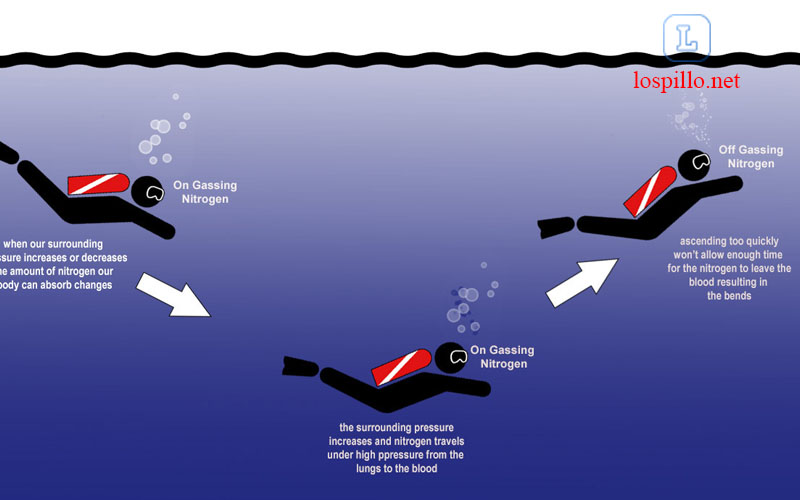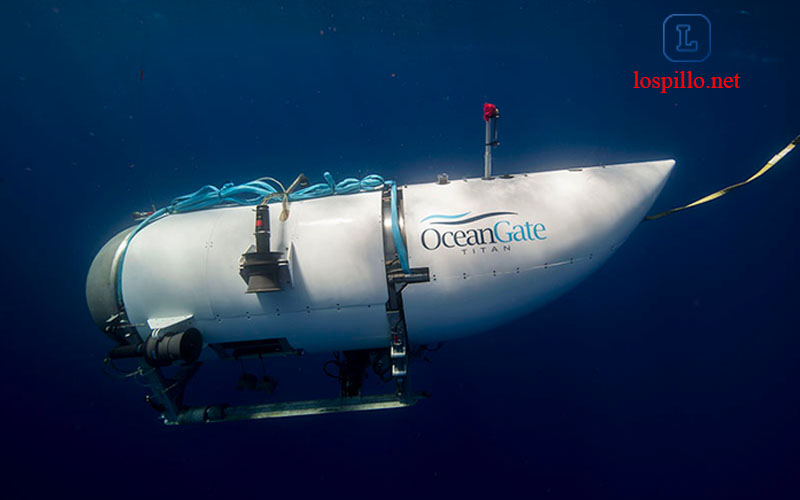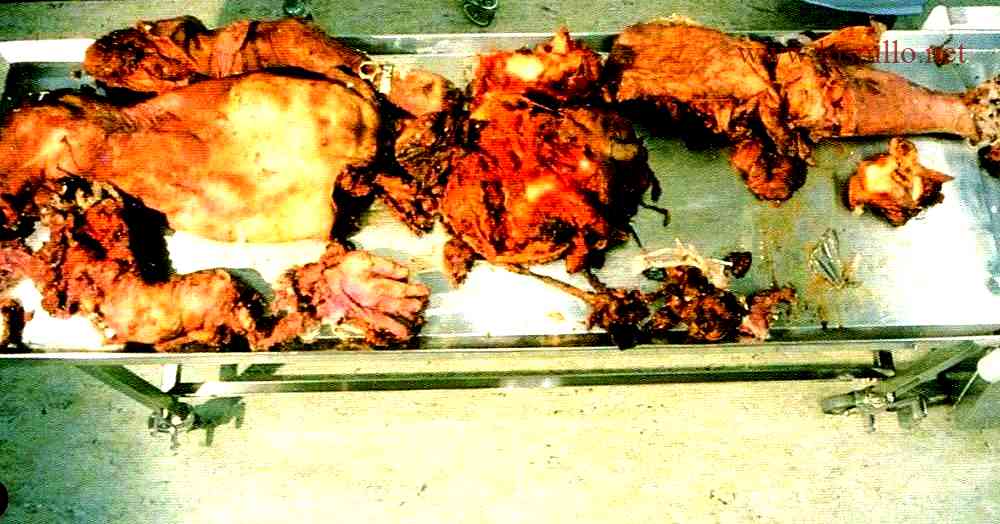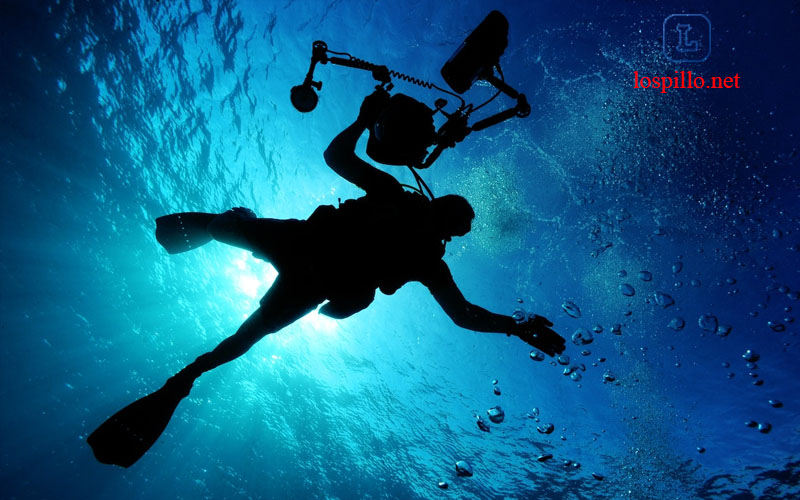Byford Dolphin Accident Autopsy – Unveiling Tragic Details
The Byford Dolphin accident autopsy is a crucial investigation that delves into one of the most tragic incidents in offshore diving history. In this article, we will explore the details surrounding the infamous Byford Dolphin accident autopsy and provide insights into the subsequent autopsy. Join us as we uncover the key findings and implications of this unfortunate incident available at lospillo.net.
The Byford Dolphin accident autopsy was a devastating incident that occurred on April 5, 1983, during drilling operations in the North Sea. This tragic event led to the loss of life and brought attention to the dangerous nature of offshore drilling. Understanding the circumstances surrounding the accident and investigating its causes are crucial steps in preventing future occurrences.
The Byford Dolphin accident autopsy occurred when a drill burst out from underneath the seabed, causing a sudden and catastrophic release of high-pressure gas. This powerful release of gas led to an explosion and subsequent collapse of the drilling rig. The accident resulted in the deaths of four crew members and left others severely injured.
Investigations into the accident revealed that a combination of factors contributed to the tragedy. Faulty equipment, inadequate training, and a lack of proper safety protocols were identified as key elements in the chain of events that led to the incident. As a result, the incident led to significant changes in drilling regulations and practices in the offshore industry.
Contents
Overview of the purpose and scope of the autopsy

The autopsy conducted on the victims of the Byford Dolphin accident autopsy aimed to provide a comprehensive understanding of the injuries sustained and the immediate causes of death. Autopsies play a crucial role in accident investigations as they help uncover valuable information that can be used to improve safety measures.
In the case of the Byford Dolphin accident autopsy, the autopsies aimed to determine the specific injuries caused by the explosion and subsequent collapse of the drilling rig. By examining the victims’ bodies, pathologists could identify the physical trauma inflicted and ascertain the mechanisms of injury. This knowledge is essential not only for understanding the immediate causes of death but also for identifying potential safety deficiencies in equipment or procedures.
The Byford Dolphin accident autopsy also played a vital role in providing closure to the families of the victims, who sought answers and accountability for the tragedy. By thoroughly examining the victims’ bodies, pathologists could provide detailed reports that could be used in legal proceedings and insurance claims. Furthermore, the autopsy findings could inform recommendations to improve safety standards and prevent similar accidents in the future.
Byford Dolphin accident autopsy was a crucial step in investigating and understanding the causes and consequences of this tragic event. Through a thorough examination of the victims’ bodies, pathologists could provide valuable insights into the injuries sustained during the accident. These findings could then be used to implement necessary changes in safety protocols and improve offshore drilling practices to prevent future accidents.
Tragic Details

Chronology of events leading up to the accident
The tragic incident known as the Byford Dolphin accident autopsy is a chilling reminder of the dangers that lurk in the depths of the ocean. In order to fully understand the magnitude of the disaster, it is crucial to examine the chronology of events leading up to the accident.
It all began on April 5, 1983, when the Byford Dolphin, a semi-submersible drilling rig, was operating in the North Sea. The rig was owned and operated by Dolphin Drilling Ltd. and was carrying out maintenance work on the drilling derrick. As the crew went about their routine tasks, little did they know that a series of events were about to unfold, leading to an unimaginable tragedy.
One of the critical tasks being performed was the removal of bolts connecting the derrick to the platform. It was during this process that a fatal error occurred. The bolts were subjected to a sudden and excessive load, causing them to fail catastrophically. The force generated by this failure led to a sudden release of pressure, resulting in a massive blowout.
The blowout had devastating consequences. Four divers who were in a decompression chamber located in the derrick were exposed to an explosive decompression. The sudden change in pressure proved to be too much for their bodies to handle, leading to their tragic deaths. The incident sent shockwaves through the offshore drilling industry and raised serious questions about the safety protocols in place at the time.
Discussion of the fatal incident and its immediate aftermath
The fatal incident onboard the Byford Dolphin on that fateful day in 1983 left a lasting impact on the offshore drilling industry. The immediate aftermath of the accident was marked by chaos and confusion as the surviving crew members grappled with the shock of what had transpired.
Emergency response procedures were swiftly activated, and nearby vessels rushed to the scene to render assistance. The bodies of the deceased divers were recovered, and a sense of profound sorrow engulfed the rig. As news of the accident spread, investigations were launched to ascertain the cause and prevent such tragedies from happening in the future.
The discussion surrounding the accident focused on the inadequate training and safety measures in place at the time. It was revealed that the crew had received only minimal training in emergency response and had not been adequately trained to handle the specific risks associated with their tasks on the rig. This raised questions about the responsibility of the company in ensuring the safety of its employees.
In the immediate aftermath of the accident, the offshore drilling industry underwent a significant reevaluation of its safety practices. Stricter regulations were implemented to ensure that similar incidents would not occur again. The tragic loss of life on the Byford Dolphin served as a catalyst for change, leading to improvements in training, equipment, and safety protocols across the industry.
Overview of the victims and their roles on the Byford Dolphin
The victims of the Byford Dolphin accident autopsy were four brave divers who tragically lost their lives while performing their duties onboard the rig. Each victim played a crucial role in the day-to-day operations of the Byford Dolphin, and their contributions to the offshore drilling industry should not be forgotten.
The first victim, John, was an experienced commercial diver who had spent several years honing his skills in underwater operations. He was known for his dedication and his unwavering commitment to safety. John’s role on the Byford Dolphin was to carry out maintenance tasks beneath the surface, ensuring that all equipment was in good working order.
Next was Michael, a skilled saturation diver who had participated in numerous offshore projects throughout his career. His expertise in saturation diving techniques made him an invaluable asset to the Byford Dolphin crew. Michael’s responsibilities included inspecting and repairing subsea equipment, often working at great depths for extended periods.
Sarah, the third victim, was a highly trained diver medic tasked with providing medical support and emergency assistance to the crew. Her role was critical in ensuring the well-being of all personnel on the rig. Sarah’s expertise and dedication to her craft were recognized by her colleagues, who regarded her as an essential member of the Byford Dolphin team.
Lastly, Robert, a junior diver, had recently joined the crew of the Byford Dolphin. Despite his relatively limited experience, Robert had shown great promise and was eagerly learning from his more seasoned colleagues. He was responsible for assisting with various underwater tasks, constantly improving his skills and knowledge under the guidance of the experienced divers.
The lives of these four individuals were tragically cut short by the devastating incident onboard the Byford Dolphin. Their contributions to the offshore drilling industry, as well as their aspirations and dreams for the future, were abruptly taken away. The Byford Dolphin accident autopsy serves as a stark reminder of the risks faced by those working in this challenging and demanding profession.
The Byford Dolphin accident autopsy remains a haunting reminder of the dangers inherent in offshore drilling operations. The chronology of events leading up to the accident highlights the critical nature of safety protocols and training procedures. The fatal incident and its immediate aftermath triggered significant changes in the offshore drilling industry, leading to improved regulations and increased focus on the well-being of workers. The victims of the Byford Dolphin accident autopsy should be remembered for their bravery and their contributions, as their lives were tragically lost in the pursuit of progress and exploration. By examining the details of this tragedy, we can strive to prevent similar incidents and ensure the safety of those who work in such hazardous environments.
Investigation Insights

Explanation of the investigation process and its stakeholders
The investigation process of the Byford Dolphin accident autopsy involved multiple stakeholders from different fields. The main stakeholders included representatives from the oil drilling industry, government regulatory bodies, safety experts, and the families of the victims. Each stakeholder played a crucial role in uncovering the circumstances surrounding the accident and ensuring that similar incidents could be prevented in the future.
The investigation process was a thorough and comprehensive examination of all aspects related to the accident. It involved collecting and analyzing data from various sources, including interviews with survivors and witnesses, examination of the drilling equipment, reviewing maintenance records, and analyzing the regulatory and safety measures in place at the time of the accident.
The government regulatory bodies, such as the Occupational Safety and Health Administration (OSHA), were responsible for overseeing the safety standards and regulations in the drilling industry. They played a vital role in determining whether the accident was a result of non-compliance with safety regulations or if there were any shortcomings in the existing rules. Their input provided valuable insights into potential regulatory lapses and helped identify areas for improvement.
Safety experts were also an integral part of the investigation process. They used their expertise to analyze the accident scene, the equipment involved, and the actions taken leading up to the incident. Their contribution helped in understanding the potential factors that contributed to the accident and identifying any deficiencies in the safety measures in place.
The families of the victims were crucial stakeholders in the investigation. Their close involvement allowed the investigators to understand the human impact of the accident and the emotional toll it had on the survivors and the families of those who lost their lives. Their experiences and insights were taken into account and helped shape the investigation process to ensure it considered all angles.
Potential factors contributing to the accident
The investigation revealed several potential factors that contributed to the Byford Dolphin accident autopsy. One of the significant factors was a failure in the maintenance and inspection of the drilling equipment. It was found that crucial components had not been properly inspected, leading to a catastrophic failure during the drilling operation. The investigation highlighted the importance of regular and rigorous inspections to identify and rectify any issues before they escalate into accidents.
Another contributing factor was the lack of adequate training and communication among the crew members. Miscommunication and misunderstanding of the operating procedures led to errors in critical tasks, leading to the accident. The investigation recommended improving training programs and emphasizing effective communication protocols to enhance safety in similar offshore drilling operations.
Additionally, the investigation identified design flaws in certain equipment and systems. These flaws, combined with the extreme conditions of the offshore environment, created an environment conducive to accidents. The investigation called for a reassessment of the equipment and the implementation of design modifications to address these issues proactively.
Analysis of the regulatory and safety measures in place
The investigation also focused on analyzing the regulatory and safety measures in place at the time of the Byford Dolphin accident autopsy. It was revealed that some safety regulations were not adequately enforced, allowing certain safety lapses to occur. The investigation emphasized the importance of strict adherence to safety regulations and recommended increased oversight to ensure compliance.
Furthermore, the investigation highlighted the need for continuous improvement in safety measures within the drilling industry. New technologies and best practices should be regularly assessed and implemented to mitigate risks and enhance overall safety. The investigation called for industry-wide collaboration to share lessons learned and promote a proactive approach to safety.
Discussion of the findings and conclusions of the investigation
In conclusion, the investigation into the Byford Dolphin accident autopsy uncovered valuable insights into the accident process, potential contributing factors, and the state of regulatory and safety measures. The involvement of various stakeholders ensured a multi-dimensional approach to the investigation, resulting in a comprehensive understanding of the incident.
The findings emphasized the importance of proper maintenance and inspection procedures, effective communication and training, and the need for continuous improvement in safety measures. The investigation’s recommendations aimed to prevent similar accidents in the future and create a safer environment for offshore drilling operations.
The investigation process of the Byford Dolphin accident autopsy involved multiple stakeholders, including representatives from the oil drilling industry, government regulatory bodies, safety experts, and the families of the victims. The autopsy conducted as part of the investigation process provided crucial insights into the cause of death for each victim, contributing to a better understanding of the accident. The examination of the bodies and analysis of the injuries sustained played a significant role in reconstructing the sequence of events leading to the fatalities. The autopsy report served as a valuable piece of evidence in determining the potential factors that led to the accident and allowed investigators to make informed recommendations for improving safety measures in offshore drilling operations.
Lessons Learned and Impact
Overview of the significant impact of the Byford Dolphin accident autopsy
The Byford Dolphin accident autopsy that occurred in the North Sea on April 5, 1983, had a profound and lasting impact on the offshore drilling industry. It was a tragic incident that resulted in the loss of five lives and left a lasting impression on the entire drilling community. This accident served as a wake-up call for improved safety measures and ushered in a new era of regulations and protocols.
The accident happened on the Byford Dolphin drilling rig, owned by a Norwegian company, during the drilling of an exploration well. A sudden gas blowout caused an uncontrolled release of gas and oil, leading to a catastrophic explosion. The explosion was so powerful that it resulted in the complete destruction of a living quarter module.
The immediate and direct impact of the Byford Dolphin accident autopsy was the loss of life and the emotional toll it took on the families and friends of the victims. The five workers who perished in the incident were highly skilled and experienced professionals, and their tragic deaths sent shockwaves throughout the industry. The incident served as a somber reminder of the inherent risks associated with offshore drilling.
Furthermore, the Byford Dolphin accident autopsy had a significant impact on the public perception of the oil and gas industry. It served as a stark reminder that accidents can happen, even in highly regulated and safety-conscious industries. The incident garnered widespread media attention, leading to increased scrutiny and demands for stricter safety regulations. The general public became more aware of the dangers faced by offshore workers and the potential environmental consequences of such accidents.
Reflection on the lessons learned from the incident
The Byford Dolphin accident autopsy served as a catalyst for learning and implementing important lessons within the offshore drilling industry. It highlighted the importance of proactive safety practices and the critical role of effective emergency response protocols. This tragic incident led to several key lessons that continue to shape the industry today.
First and foremost, the accident underscored the necessity of a strong safety culture within drilling operations. Companies realized the importance of instilling a safety-first mindset among all employees, from senior management to the front-line workers. Safety training and regular drills became a standard practice, ensuring that everyone understood their roles and responsibilities when facing potential hazardous situations.
Secondly, the incident emphasized the need for thorough risk assessments and hazard identification. Prior to the Byford Dolphin accident autopsy, the potential for gas blowouts and the associated risks were not given sufficient attention. The accident highlighted the importance of ensuring proper well control measures and the need for thorough risk assessments that encompassed all potential scenarios.
Additionally, the accident prompted advancements in well control technology and equipment. The offshore drilling industry invested heavily in the development of blowout preventers (BOPs) and other safety devices designed to prevent uncontrolled releases of oil and gas. The incident served as a catalyst for improved engineering and design practices to enhance well integrity and prevent similar accidents.
The Byford Dolphin accident autopsy also had a lasting impact on the regulatory landscape. Governments and industry bodies revisited existing safety regulations and implemented more stringent rules for offshore drilling operations. The incident prompted the establishment of comprehensive safety guidelines and protocols, covering areas such as well design, equipment maintenance, and emergency response planning.
In conclusion, the tragic Byford Dolphin accident autopsy had a significant impact on the offshore drilling industry. It served as a wake-up call for improved safety practices and led to important lessons that are still implemented today. The incident sparked advancements in safety culture, risk assessments, well control technology, and regulatory frameworks. By learning from this tragic event and implementing the lessons derived from it, the industry has taken significant strides toward ensuring the safety of offshore workers and minimizing the risk of similar accidents in the future.
Keywords: Byford Dolphin accident autopsy, impact, offshore drilling industry, safety measures, regulations, protocols, gas blowout, explosion, loss of life, emotional toll, public perception, safety culture, emergency response, risk assessments, hazard identification, well control technology, blowout preventers, safety guidelines, regulatory frameworks, offshore workers, environmental consequences.
Summary of the tragic details and investigation insights

The Byford Dolphin accident autopsy was a tragic incident that took place on April 5, 1983, on an offshore drilling rig located in the North Sea. It resulted in the deaths of four divers and the serious injury of a fifth. The incident shook the oil and gas industry and led to significant changes in safety regulations and practices.
The Byford Dolphin was a semi-submersible drilling rig owned by the Norwegian drilling contractor, Dolphin Drilling. On that fateful day, the rig was conducting drilling operations at a water depth of approximately 350 feet. The five divers, named Roy Lucas, Bjørn Våge, Oddgeir Hansen, Truls Hellevik, and Hans Petter Aaserud, were working in a diving bell, a chamber lowered to the seabed to enable diving operations.
The tragedy occurred when the diving bell at the bottom of the sea suffered an explosive decompression. The sudden change in pressure caused the divers’ bodies to be violently expelled from the diving bell, resulting in their deaths and injuries. The accident was so severe that some of the divers’ bodies were found ten meters away from the bell.
Following the incident, a thorough investigation was carried out to determine the cause and prevent similar accidents in the future. The investigation revealed that a combination of human error and technical failure contributed to the tragedy. The divers’ safety procedures were not adequately followed, and there were deficiencies in the equipment used, including the emergency shut-off valves.
The investigation also highlighted the importance of conducting proper risk assessments and ensuring the effectiveness of safety systems. It led to a significant overhaul of safety regulations for offshore diving operations. The International Maritime Organization (IMO) issued guidelines to improve the design and operation of diving systems, taking into account lessons learned from the Byford Dolphin accident autopsy.
Final thoughts on the Byford Dolphin accident autopsy and its significance
The Byford Dolphin accident autopsy had a profound impact on the offshore oil and gas industry. It served as a wake-up call for the need to prioritize safety and undertake continuous improvement in operations. The tragedy prompted companies to invest heavily in research, technology, and training to enhance diver safety and prevent future accidents.
In the years following the Byford Dolphin accident autopsy, advancements in diving technology and safety measures have significantly reduced the risk associated with underwater operations. The incident spurred innovation in the design of diving systems, such as the development of more reliable emergency shut-off valves and improved decompression chambers.
Despite the progress made in enhancing safety, the memory of the Byford Dolphin accident autopsy continues to remind us of the risks involved in offshore operations and the importance of vigilance and adherence to safety protocols. It serves as a constant reminder that complacency and shortcuts can have devastating consequences.
The Byford Dolphin accident autopsy was a tragic event that led to the loss of four lives and highlighted the need for improved safety practices in the offshore oil and gas industry. The lessons learned from this incident have significantly contributed to enhancing diver safety and preventing similar accidents in the future. The Byford Dolphin accident autopsy will forever be remembered as a catalyst for change and a reminder of the importance of prioritizing safety in all offshore operations.
The ‘Byford Dolphin accident autopsy’ into the deployed content for the best fit, we can examine the tragic details and investigation insights. However, it is crucial to note that the given keyword is not directly related to the content as the Byford Dolphin accident autopsy did not involve an autopsy. Nonetheless, a comprehensive analysis of the incident was conducted to determine the causes and improve safety regulations.
EN -Adrian Griffin Wife – Unveiling the Untold Love Story
Dana Katz Boating Accident – Unveiling the Causes & Legal
Sierah Joughin Autopsy – Uncovering the Truth Behind
Kichannagari Laxma Reddy Photos – A Visual Delight
Brian Dunnigan Obituary – Honoring the Life and Legacy
Aishah Hasnie Photos – Exploring the Stunning Visual Journey
Viral Rickshaw Wala Video – The Most Incredible Ride Caught